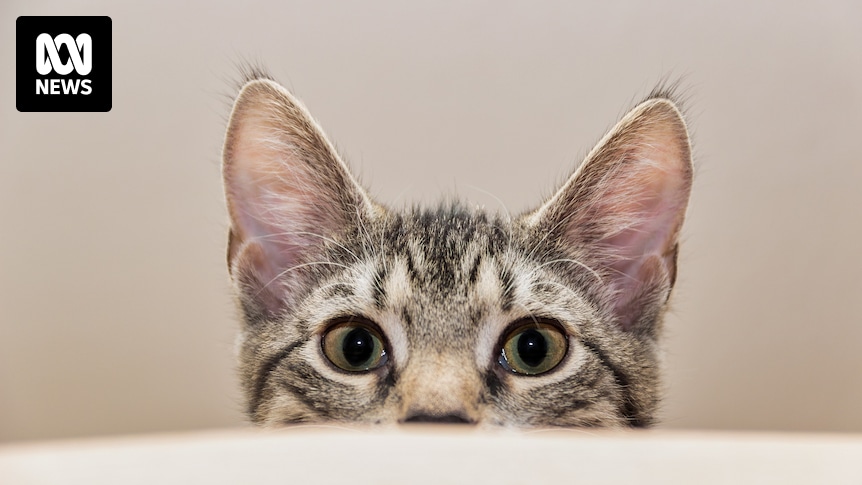Broader adoption of keeping cats safe at home would have large benefits for cat welfare, human health, local wildlife and even the economy. So, should cat owners be required to keep their pets contained to their property?
The answer to the question is obviously “yes”.



Citation needed
Before pesticides cats used to just starve. Everyone knows this.
/s
Equally, before the post-DDT pesticides(when the decline started), housecats didn’t exist, never went outside and never killed anything.
/s
Go look at the other reply where I sourced my opinion.
You don’t think house cats existed before DDT pesticides?
You don’t think house cats, which have existed for 3600 years, existed before 1874?…
Do I need to math that math for you?
thats my point
If house cats were actually some kind of living natural disaster, birds would have driven extinct millenia ago. To solely blame housecats for the mass extinction of songbirds that have existed beside them for hundreds to thousands of years without any appreciable population effect is insane.
Also while DDT has its own host of issues regarding it building up in the food chain, my concern here is the post-DDT ones.
What a genius! You solved it!
Here I was thinking there are billions more humans than at any other time in history, many of whom have pet cats.
The increase in house cat numbers is surely unrelated to the increased predation on native wildlife!
No. I am saying it is not solved and that articles like this are skirting the real problem, which is probably pesticides and herbicides.
The decrease in bird populations of North America is new phenomenon and has only started some time since 1970. Notably, a lot of the songbirds affected are grassland species that dine on insects, seeds and berries, all of which are covered in or have ingested pesticides at farms. And is known, though not well documented, that insect populations are also plummeting but at a much steeper rate that songbirds.
Cat numbers go up, native bird numbers go down, you can’t explain that.
Also the article is about Australia. Sorry your American brain can’t handle that concept.
Its a global problem. Its been best studied in North America, so I use those studies.
Https://www.ncbi.nlm.nih.gov/pmc/articles/PMC8640698/
We didn’t know or study the effects of pesticides in various wild birds. And it varies wildly between species, with chickens not being a good general case. Also that birds are considerably more affected by pesticides than mammals.
Simple logic. Housecats do not have access to deep woods or exist in large populations outside of cities and suburbs in North America, yet the populations are declining there. This implies that they are not the cause of the decline.
This logic is backed up by https://www.birds.cornell.edu/home/bring-birds-back#:~:text=All told%2C the North American bird population is,declined by 53%25%2C or another 720 million birds.
LWhich points out that it is a multitude of factors and that grassland species(i.e. farmland) are the most affected, with wetland and forest species being less affected.
That’s a whole heap of words to say “maybe”. On the other side of the world.
If you’re happy being a selfish piece of shit, feel free to leave your cat roam. When Mittens gets hit by a car / contracts feline aids / otherwise meets a premature death, you can rest easy knowing that akshually it was probably pesticides.
Say you didn’t understand what any of those papers said without saying you didn’t understand what those papers said.
I mean, he doesn’t have to say it, your comment and the sources did a good job suggesting you only did a cursory read yourself.
The first paper states that birds are less sensitive to pyrethroid based pesticides, which makes your broad statements about pesticides sketchy at best.
Simple logic doesn’t work in science specifically because it’s simple and is subject to internal biases. You can’t make an assumption and appeal to intuitive reasoning without some evidence to draw that link.
Your second paper doesn’t back up your claim. It states that bird population loss is a multifaceted problem. Yes, pesticide use is called out as a factor, but so too is habitat loss through urbanisation and unregulated harvesting practices, which kind of answers your point 4.
These are all American sources. As a result, very little of this is applicable to the Australian biosphere beyond the most broad strokes since they dont take into account differences in local food webs, urban planning, environmental legislation etc.
TLDR, someone is using irrelevant sources and their dislike of pesticides to justify keeping their cats outside
No it absolutely doesnt.
It absolutely states that birds are considersbly more at risk, and that we dont know how by how much. Try reading more than the intro next time.
I said that cats arent the problem, they’re a symptom of it. That is a definition of a multifacted problem. That paper absolutely says the same thing.
The reality is that you could keep every housecat inside and it would not stop the decline.
“There’s a possibility that some other factor may play a part in offsetting one of the negative impacts of free-range cats… therefore, all other positives of containing pets may be completely ignored”
- You, 2024
I feel like you’re a top tier anti-vaxxer too.
Lol, Person points out logical flaws in only blaming cats and suggests the root problem is known problematic pesticides and herbicides that are doing things like creating the conditions for “colony collapse disorder” in bees.
Also I’m up to date on my booster shots.